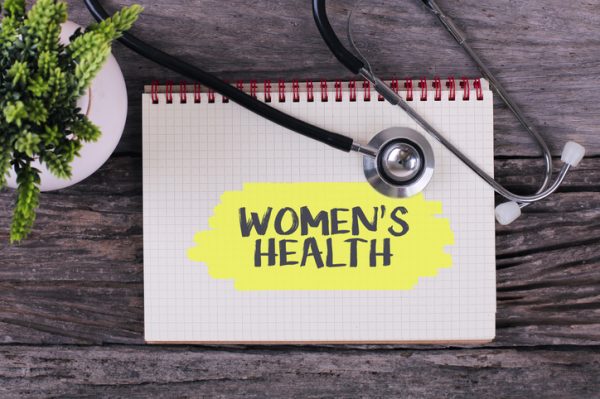
I’ve had numerous medical issues throughout my life. Only recently have I learned they’ve all been connected.
When I was a toddler, I started having severe gastrointestinal distress that frequently led me to visit the emergency room. Around age 8, the allergies started, and a full series of allergy shots didn’t help. I still suffer from complex histamine reactions to the majority of “healthy” foods, which puts my necessary eating habits in direct conflict with leading dietary recommendations. And then at 14, I began to develop chronic ovarian cysts.
No one ever questioned the severity, quantity or frequency of the cysts and always shrugged these off as “normal” for menstruating women. By the time I graduated high school, the norm for me was living in a state of severe and continuous colon, uterine and ovarian pain.
These symptoms continued to progress. By my early 30s, I was having issues with my urinary tract, pelvic floor and my colon pain had spread, infiltrating my hip and eventually leading to loss of mobility. One time, I collapsed just blocks away from my house and had to call 911.
Everything felt wrong, and no one had answers.
Finally, a confirmed diagnosis
All of this made working extremely difficult and delayed my college education. I was inaccurately diagnosed a number of times with things like IBS, PCOS and Crohn’s. Nothing improved until I moved to San Diego from another state and discovered a support group living with similar symptoms.
As it turns out, all of my symptoms including my allergies and GI issues are related to a disease that impacts 10 percent of women. That’s 200 million women worldwide suffering with something called endometriosis, which is a complex disease that causes inflammatory lesions of endometrial-like tissue to grow outside of the uterus.
Between 50 and 80 percent of women with pelvic pain have this disease. Sadly, it can take 10 or more years to diagnose (16 in my case).
I was diagnosed stage 4 before my first surgery in San Diego. Ten months later, I was back for a second surgery, which has helped with my mobility, but it’s not a cure. The disease remains active, and I likely will need a third surgery during the next decade. Hopefully, there are more effective, less invasive treatment options before then.
3 ways to make a difference
In the meantime, here are three ways we can work to improve how we talk about and treat this horrible disease:
1. Increase awareness of its complexity: In an effort to simplify how we talk about endometriosis, we downplay the disease’s complexity. This is a chronic, progressive, whole-body disease with lesions that can spread to many organs throughout the body and effect a multitude of body systems. There is nothing simple about it.
In addition to the pain and daily limitations it causes, endometriosis leads to infertility in 30-50% of the women suffering from it. That permanently shapes the makeup of millions of families.
2. Primary care and OBGYN training: As the first line of defense, primary care physicians need significant clinical training in women’s health to avoid misdiagnosis and inadequate treatment. OBGYNs need better training too. I can’t tell you how many times I heard: “Just go on birth control. You’ll be fine,” as they dismissed my many symptoms and history of adverse reactions to the pill.
It was gaslighting at its worst from the very people who should care the most, and it’s just not that simple. A recent study showed 43.6% of women reported mood changes as a serious side effect of hormonal contraception. The pill is used by hundreds of millions of women worldwide, and it should be an option for both birth control and management of endometriosis—just not the only option.
As many as half of all women suffering from this disease ever receive an accurate, documented diagnosis. Of the women in my support group, almost all of them eventually figured it out on their own.
3. More funding with guardrails: The National Institutes of Health (NIH) budgeted just $2 per patient in 2022 for endometriosis research, and we still don’t even know what causes it. There has been no innovation in non-hormonal treatments in years. There also should be stricter guidelines around the limited funding we do have to ensure it leads to advances, rather than recycling old, often ineffective treatments.
If only they had listened
Through the years, I’ve seen 12 different GI specialists, countless gynecologists, and many other specialists. I’ve had at least 10 surgeries and procedures. Looking back, I’m not sure my medical team was always listening. If I could change one thing, it would be for more people to truly listen and engage about women’s health issues. It’s unacceptable how many of us are uncomfortable just talking about these issues.
Everyone likely knows at least one person silently battling endometriosis. They’re being told their symptoms are “normal” or acceptable. We can do so much better for so many of us.
Desiree Lindsay is Director of Public Affairs for the Market Access practice at Innsena, a health technology consultancy dedicated to improving the nation’s public health infrastructure and advancing care outcomes for underserved communities. Lindsay focuses on bridging external communications strategy with community, government and public engagement. She advises on how to rally patients, providers, partners and policy makers to increase the adoption and expansion of programs and services.
This post appears through the MedCity Influencers program. Anyone can publish their perspective on business and innovation in healthcare on MedCity News through MedCity Influencers. Click here to find out how.









